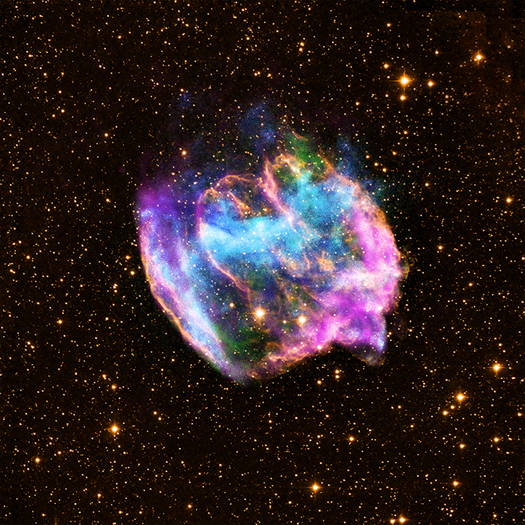FITS and Starts
In continued recogintion of American Archives month, we've dusted off some raw data from recent Chandra press releases over the past year for inclusion in our openFITS collection. This brings the total collection up to 20 objects including supernova remnants, active galaxies, star forming regions, black holes, and pulsars and neutron stars. These data are ripe for exploration. The new data sets include the Vela Pulsar Jet, and supernova remnants W49B and G1.9+0.3 (which also happens to be the Milky Way's most recent supernova remnant).

W49B is a special case for openFITS. We have somewhat broken with tradition and have provided more data than what was used in creating the press image (though technically, this isn't more data, just a different representation of the same data). W49B has been extensively observed with Chandra with over 2 days worth of observation time devoted to collecting information about this source. As a result, we have a very rich data set to work with, which can be sliced and diced into many different component images emphasizing different elements emitting X-ray light. I wrote a blog post about the quality of this data and provided some behind-the-scenes insight into the image earlier this year. In creating a multi-wavelength composite image, we decided to take a "less-is-more" approach and utilize two low and high energy, broad-band X-ray images colored green and blue in combination with radio and infrared data colored magenta and yellow respectively. This allowed for a dynamic, feature-rich and aesthetically pleasing image in which the component parts were clearly distinguishable, allowing the science behind this supernova remnant to shine through.
Well, now is your chance to dig in to the X-ray data and see what you can do with up to 6 different wavelengths of X-ray light!
-Joe DePasquale, Chandra Science Imager
